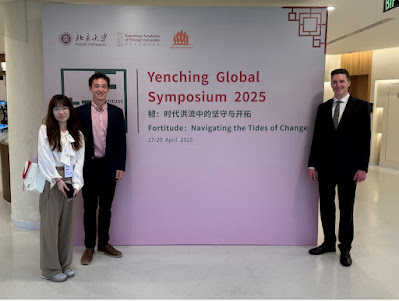China ‘Plus’ Studies: Studying China at the Intersection of its Relations with Others
Despite ongoing restrictions which make it difficult for scholars to visit and research China within its own territory, Rebecca Ash-Cervantes argues that China has already made itself accessible to scholars all over the world through its interactions with others.
China’s rise came with both economic improvements, as well as greater renown on the world stage. Not only for the nation itself, but also for the Chinese people for whom there are many centuries old diaspora in most nations around the world. We saw the expansion of Chinese embassies and consuls, the proliferation of the sometimes-controversial Confucius Institutes, multinational Chinese firms and the like signaling this new age for China. Pre-pandemic China scholars found themselves spending copious amounts of time in China, studying these changes and trying to better understand China through their various angles of study. However, with border restrictions, visa limitations, and exorbitant flight and quarantine costs, the already niche group of individuals researching China has dwindled, as well as students who would possibly explore such a direction. But, as I will argue in this short blog post, this need not be the case, as China has made itself readily accessible in a number of other ways, mainly in how it interacts with the world.
The China in Our Backyard
While the world has been aware of China as a nation and concept for centuries through the world’s early international trade routes such as the Silk Road and the long-lasting effects of colonialism, the expansion of a Chinese global presence as narrated by China is a relatively new phenomenon. Rather than a far-off place that one travels to on camel back, China is now widely available no matter where one is in the world. An obvious venue of access is the internet, which gives us analytical articles on China, news on daily occurrences and social issues in the country, and -for proficient users of Chinese- a wealth of target language literature, social commentary, and anecdotal experiences directly from China.
But even more than what one can access on the worldwide web, for anyone living just about anywhere there is most certainly a prevalent Chinese presence near you. Between the wide-reaching existence of Made-in-China products, the accessibility of Huawei electronics, popularity of Chinese-created apps such as TikTok, and the newest global Chinese endeavor with Comac, a Chinese competitor to Airbus and Boeing, (you may soon be flying on Chinese airplanes) there’s a physical piece of China to be analyzed in our everyday alone.
Even more interesting, however, is how China as a nation-state is interacting with the world. With massive infrastructure investment projects in states across Southeast Asia, Africa, Latin America, and the Caribbean, China is establishing an identity as a so-called “no-strings attached” funding alternative from traditional sources for many developing nations. Maintaining its position in the trade and tech war with the United States, China has further solidified its status as a significant global power. The One Belt, One Road Initiative (BRI) is yet another way that China aims to connect the world in relation to itself.
In line with this thought is the new initiative led by HNC Co-Director Dr. Webb tentatively titled “HNC-in-the-World,” a pursuit to guide students in their exploration of the multiple instances of Chinese presence and influence around the globe. The initiative’s first stop will be Peru, whose developing relationship with China as a BRI signatory, as well as Chinese business influence in the areas of mining, gas, and hydropower, make it an excellent case study for students interested in China and its growing relations with the Global South. This trip with be the first of many HNC experiential learning endeavors to explore China outside of China.




